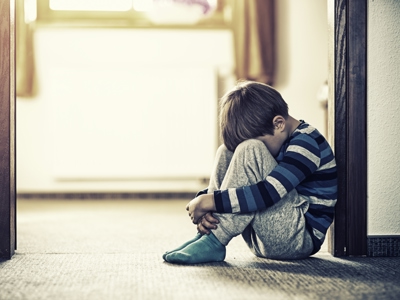
Peer-on-peer abuse: is enough being done to address the risks in schools?
With children returning to classrooms following a national lockdown, Andrew Lord considers whether enough is being done to address the risks of peer-on-peer abuse
Posted on 15 March 2021
In 2017 I wrote a blog entitled The tip of the iceberg - the sad reality of peer-on-peer abuse in schools, which followed on from a Panorama programme highlighting the issue of abuse in schools as perpetrated by other pupils. Now three and a half years on and with children returning to their classrooms last week after national lockdown, it seems a good opportunity to consider where we are at with tackling this issue.
Peer-on-peer abuse, sometimes referred to as child-on-child abuse or sexual harassment and sexual violence by children, can happen between children of any age or sex. It can occur between just two children or there can a group involved. Some children are a greater risk of being subjected to inappropriate sexual behaviour from other children, and evidence suggests that girls are more likely to be victims of sexual violence and that it is more likely to be perpetrated by boys.
Whatever its form, peer-on-peer abuse has significant potential to cause distress and trauma to victims.
Since my blog in 2017 it seemed that there was a growing awareness of the risks of peer on peer abuse.
There have been numerous articles about this issue, the 2018 NSPCC report Is this sexual abuse?, and there were reported rises in the number of children seeking help over peer-on-peer abuse.
Perhaps most notably, in December 2017 the Department for Education first published its guidance entitled: Sexual violence and sexual harassment between children in schools and colleges. The guidance states, “the advice sets out what sexual violence and sexual harassment is, how to minimise the risk of it occurring and what to do when it does occur, or is alleged to have occurred”.
Following publication of the Department for Education’s guidance, I was invited to speak at a number of conferences specifically about the issue of peer-on-peer abuse. From conversations I have had with delegates I have felt a sense that they want to be doing the right thing, but during one discussion there was still a significant divergence of opinion amongst audience members as to how to deal with an allegation of sexual harm amongst children.
Responses to allegations are left to individual schools or colleges, and whilst it would be impossible to cover every imaginable scenario, the generalised nature of the advice from the Department of Education means that the risk of inconsistencies is significant.
In my casework I have seen or heard of behaviour being categorised as age-appropriate exploration arguably without sufficient consideration of the impact on the victim, insufficient measures being put in place when it could be said that there was an awareness of past incidents of concern, and slow responses to allegations of sexual harm or violence.
Clearly these are not straightforward matters, but some educational establishments are seemingly failing to proactively consider these issues and the potential for inconsistent responses does not help the situation.
The Department for Education recently held a consultation on updating the “Keeping Children Safe in Education” guidance, with reference also made to their “sexual violence and sexual harassment between children in schools and colleges” advice.
Leigh Day’s response suggested that there be a stronger commitment to the victims of peer-on-peer abuse remaining in their routine wherever possible, further illustrative examples of what institutions may do in response to allegations of sexual violence amongst children, and mandate the reading of the Sexual violence and sexual harassment between children in schools and colleges advice for some categories of staff.
Of course there are much wider issues than just the guidance, and I have previously hosted a discussion with the parents of a victim of peer-on-peer assault and the former co-director of the Ending Violence Against Women Coalition for the Leigh Day podcast.
It seems as though there was a growing awareness of the risks of peer-on-peer abuse, albeit with much more still needed to be done. We must not let that momentum wane. As children are returning to schools it is important to acknowledge and tackle head on any risks of harm, including the potential for them to be subjected to sexual violence or harassment by their fellow pupils.

Abuse and Exploitation Claims | Expert Abuse Solicitors
Acting on behalf of those who have suffered abuse
The tip of the iceberg - the sad reality of peer-on-peer abuse in schools
Last night's Panorama programme highlighted the stark reality of peer-on-peer sexual abuse within our school system. Andrew Lord, solicitor within the abuse team at Leigh Day, considers what more can be done to protect pupils from coming to harm.


